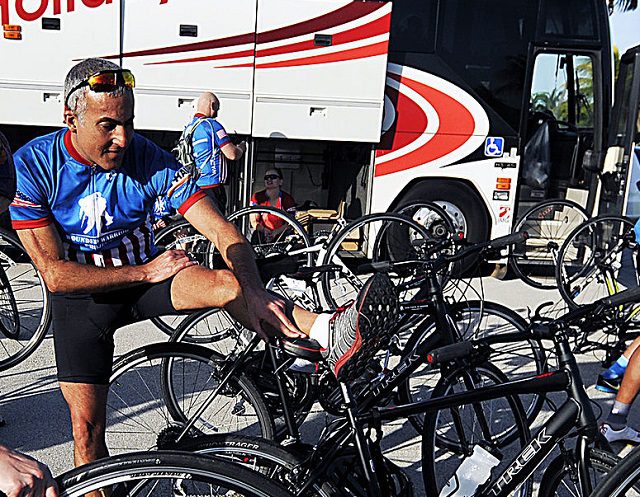Yes, stretching is still very important: Here’s why
Proper stretching for cyclists is an area of great debate, but has few definite answers.

Proper stretching for cyclists is an area of great debate, but has few definite answers. What muscles do I need to stretch in order to be faster? When is the best time to stretch? How long do I hold a certain stretch for? And how do I get the most out of my stretch? All common questions for riders.
Here is what you need to know: The purpose of stretching is to increase the length of a muscle. Muscles are viscoelastic by nature. This can be likened to a memory foam pillow. Push your hand into a foam pillow and when you remove it, you can see the indent. But wait long enough and the pillow will return to its original shape. Muscles are the same way. You can lengthen a muscle by stretching, but give it a few minutes and it will slowly return back to original length. So why stretch if muscles by nature return back to their original length? If you repetitively stretch daily for weeks and months, a muscle will slowly increase in its overall length. But it doesn’t happen overnight.
Static stretching (taking a muscle to end range and holding it there) for more than a couple of seconds before an event or competition has been proven to decrease a muscle’s contractility or power-generating capacity. In short, stretching statically before an event is a futile effort to increase performance. Recent work shows that static stretching before an event may actually increase your chance of muscle injury. Stretching as part of training is important, but should be done at its own distinct time. Take 20 minutes a day and work through a few stretches, holding each for between 10 and 60 seconds.
When determining which muscles to stretch and how much they should be lengthened, it is important to look at the particular sport that you participate in and if you are stretching for performance or for general health. I often hear cyclists make the statement that “my hip flexors are tight/ short.” Based on your position on the bike, they should be short. Stretching out your hip flexors too much will change the length/tension relationship of the muscle and decrease power potential in this cycling-specific range.
After a long, hard ride, muscles will shorten and should be stretched the same day to return them to their pre-ride relaxed position. Failure to stretch will lead to chronically tight muscles that are too short for a sport-specific range. Stretching is an important part of overall muscle health. It should be done daily and consistently. It’s not definite if stretching should be dynamic, static or partner- assisted. The important part is that you stretch.
STRETCHES TO MAKE YOU FASTER
Hip Flexors: In the lunge position with your knee resting on the floor, keep your torso vertical and your pelvis in a neutral position. Slowly lean forward in the lunge. Tension should be felt on the front of your right hip and groin area.
Quadriceps: In the same starting position as for the hip flexors, pull your rear foot towards your buttock with one hand until you start feeling tension in the front of your thigh. Slowly lean forward in the lunge position, keeping your torso vertical and your pelvis in a neutral position. Tension should be felt in your mid thigh and slightly over your hip.
Hamstrings: Sit on the ground in the hurdler position with one leg outstretched and one tucked in front toward your groin. The outstretched foot should be flexed away from the body and knee slightly bent. Keeping your torso straight, flex forward at your hips. Tension should be felt mid hamstring – nOT behind your knee.
Calf Muscles: Lean forward against a wall as though you are trying to push it over. With your rear foot heel on the ground, lean into the wall, keeping your rear leg straight. Tension should be felt over the calf muscle and back of your knee. For the soleus, bring your rear foot forward six inches so your rear leg knee is bent. Bend both knees as you lean into the stretch. Tension should be felt over the lower calf and achilles.
Gluteal Muscles: Lying on your back with one leg straight, pull your opposite knee towards the opposite shoulder (left knee to right shoulder). Tension should be felt in the buttock and outer hip.
